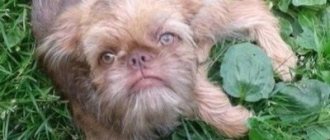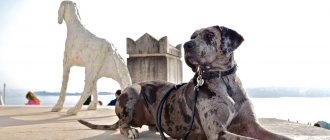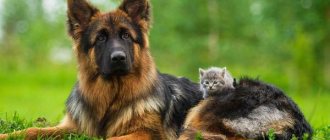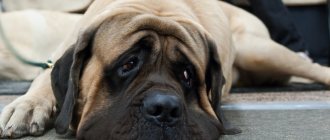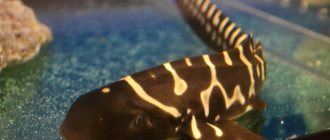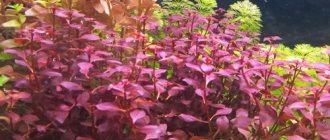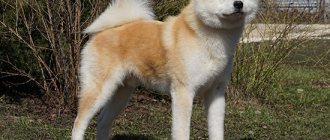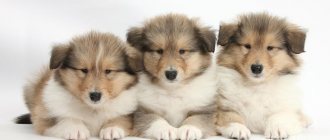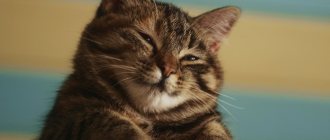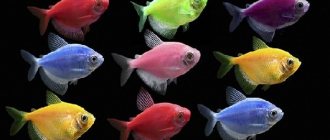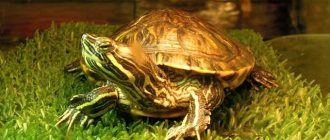Thoroughbred horses have always been in price. Previously, a good horse was akin to an expensive car. However, machines did not replace horse breeding. Many hobbyists breed thoroughbred horses of different colors. One of the most popular is the dun color of the horse.
The dun horse is standing
Brown horse of bay color with black mane and tail
Horse of dun color
Light gray mare
Damn horse
Red horse
Salty shade of a horse
Dun horse
What is a horse's color and markings?
Horses can have different colors with or without spots. Experienced breeders have always worked on the colors of horses, bringing out the best representatives. The following suits are considered the most common:
- Bay. Brown body with black legs and black mane and tail. Bay breed undercoats vary in lighter or darker color.
- Redhead. Light brown or slightly reddish body color. The tail and mane are the same color as the body, sometimes a lighter shade.
- Gray. This suit includes many varieties of colors, including gray, light gray, steel gray, dark gray, with “apples” or “buckwheat”. All gray horses have black skin with white, gray or black hairs on top, resulting in different shades. A light gray horse can be confused with a white color. However, white horses have pink skin.
- Voronaya. These horses have black skin, coat color, mane and tail.
- Bulanaya. This horse has sandy hair, a black mane, tail and legs.
- Solovaya. It has a light yellow body with light legs, mane and tail, which often have a soft cream tone.
- Brown. This suit is characterized by a brown color. The color can be light or dark tones. The legs, mane and tail are always a little darker.
- Mousey. The body is gray (mouse) in color. The head, limbs, mane and tail are black.
- Piebald. This color is distinguished by large spots scattered throughout the horse's body. The limbs are light, often white.
Many horses have markings on their faces and legs. Often there are combinations of spots on different parts of the body. The most common marks include:
- Star. This is a white mark on the forehead just above the eyes.
- Protochina. A narrow stripe along the muzzle.
- Bald. The same as a groove, but a wider stripe.
- White muzzle. A white “mask” that covers almost the entire face.
"Stockings" on the animal's legs can cover the limbs to the wrist or higher. Sometimes the contrasting color is present only on the hind or front legs.
Damn horse color: photo description
It is not for nothing that the horse is called the most beautiful and noble animal.
Of particular interest are the handsome horses of rare colors. This is exactly what dun suit is considered to be. The word “damask” within the Russian language is very consonant with the word “bulatny”. This similarity creates the illusion of the warlike nature of such horses, identifying them with damask steel and thereby significantly increasing their popularity in human hearts. In fact, the word “damn” has a different origin. There are two versions:
- From the words " bulan " or " bolan ", meaning "deer" or "elk". This assumption is based on the similarity with deer coloring. Even Americans in their native language call dun horses “buckskin,” which literally means “deer skin.”
- From the word “ bolan (-mak)”, meaning the verb “to darken” or “to become cloudy”, which fully characterizes dun horses of dark colors that do not have “apples” on their bodies.
But the fact that the name of this color has nothing to do with steel or weapons does not in any way detract from the dignity and nobility of such horses.
Damn suit is one of the most noticeable and attractive . Such horses are called solar or golden. The contrasting color of the mane and legs emphasizes the slenderness and stateliness of these animals. This also favors the breed range, for which the dun color is characteristic. These are predominantly riding breeds, characterized by a fairly light constitution:
Distinctive characteristics of dun horses
Many people who are far from horse breeding wonder what color a dun horse is and what markings are characteristic of this color. The dun gene produces both red and black pigments in a horse's coat. This breeding gene can have some effect on the appearance of black and chestnut colored horses by lightening the animal's skin and suppressing the base color of the mane, tail, legs and markings.
The classic dun horse is an animal with golden and brown hair on the body, which gives a tint of different tones - from sandy yellow to reddish brown. Horses always have a dark stripe running down the back, and the tail, legs, muzzle, neck and mane are darker than the body. Some representatives of this color can be light yellowish or even steel gray. It all depends on genetic coloring. The markings are white, light gray or light yellow.
There has long been a debate among horse breeders about the connection between a horse's color and its disposition. Previously, it was believed that dun representatives had a difficult character. They are picky and capricious, get used to one owner and obey only him. Whether this is true or not has not been proven by anyone. Some horse breeders willingly breed dun horses. But in equestrian sport there are few representatives of the sand color. Such selectivity may be associated with a stereotype about the animal's character.
Description of "Bulan"
The dun horse is characterized as an unusually beautiful animal. Its body is covered with hair that has a sandy tint with a slight yellowish tint, although occasionally there are individuals with a small amount of dark hair - they darken the overall background. Such horses always have a dark tail and mane, limbs and hooves.
Sometimes you come across specimens with black hair on the body. For these reasons, the animals are called native horses. On the back there is a dark “belt” along the ridge, and on the forelimbs there is a zebroid coloring - these are all signs of the “wild” dominant gene.
The shade of the main color can vary from cream color to cognac color. Horses typically have pigmented skin and bright amber eyes. Specimens with white spots are rarely found, not on the body, but on the limbs.
Since ancient times, the main quality of dun horses has been noted: the desire for freedom. It is believed that the first wild stallions, which no longer exist, had the dun color, but their genes are inherited.
Substrates
Damn suit is not one of the main ones. Most often these horses are classified as bay. If the color is dark, then such an animal will be classified as a Savras suit. However, the dun horse has its own qualities.
Gray horse color
A special feature of the suit is the silver tone of the hair on the body, which appears only after juvenile molting. Before this, the color of the horse is no different from other representatives of the dun color.
Chagrave horse
These are representatives of the suit with an unusual pattern on the body. Most often these are “apples”. They occur when patches of dark hairs spread over the classic sandy-brown color, forming a network of patterns. Black inclusions are located everywhere: on the neck, head, shoulder, torso. Only the lower part of the legs of chagrave horses is white or light yellow.
Dark brown horse
These are horses that have a brown or dark brown color without any admixture of red. Representatives of this substratum often have black spots on their bodies that form “apples.”
Light dun suit
Horses of this breed have a beautiful sand or cream color. The hair on the head is always a little darker. The mane and tail are black. Often these horses are confused with representatives of the Isabella color due to their similar color. However, dun representatives have dark skin and brown eyes, which distinguishes them from Isabella horses.
Golden dun horse
The golden-brown horse has a uniform color in all parts. In the sun, the hair shines and makes these horses stand out from others. Bulans in gold look beautiful and are valued by horse breeders.
Few examples
The most accessible and famous example is Spirit (here is the answer to the question, what color is Spirit from the cartoon), from the cartoon, where a mustang from the prairies goes through the path of meeting people, pain, hardship, life in an Indian camp and returns to his herd.
This color is very common in the Akhal-Teke breed; one might even say that this is a distinctive feature of the breed as a whole. Golden beauties were valued by the Arabs as worth their weight in gold, gradually becoming overgrown with fables and legends, and were considered a sign of nobility and wealth. It is not often that you see a working horse of this color in villages, and it is also rare in racing stables.
The Exmoor English pony carries an almost pure dun genotype in the breed, as it is the oldest breed in England.
A little history
No one can say for sure when this beautiful suit appeared. The first sand-colored horses were seen in Asian countries. There were many of them in the wild steppes of Kazakhstan and Mongolia. However, these animals were distinguished by the presence of small dark stripes running down the back. And today there are specimens that are classified as indigenous.
These horses began to be crossed with representatives of the nightingale and isabella colors, producing noble horses. They came to Europe only in the 15th century, immediately gaining popularity among aristocrats. Brown horses were present in the stables of many noble persons.
However, most aristocrats preferred bay horses, which were more hardy. Brown horses were considered exotic animals and also had a nervous disposition. But the suit had its fans, who continued to preserve and improve it. It was considered good manners to have a dun horse in the stable with some kind of pattern or spots on the body.
Origin story
Isabella horse
The dun horse is an aristocratic animal. This is due to the unusual light gray color, which has always classified the animal as “noble”. In English, the dun color of a horse is translated as “deer skin.” However, this horse color is not the only one.
The origin of the suit remains a mystery to this day. There is no information about the place and time of origin of the species. But some historical writings note that in Parthia the horses were exclusively yellow in color.
The first facts about the animal appeared in the 16th century, when new exotic representatives of horses appeared in Europe: nightingales and dun horses. It is at this stage that the formation of that very aristocracy takes place; the nobility used only them.
Gray horse color
Please note: with the beginning of the Romantic era, the popularity of dun horses began to decline, since horses of dark colors were stronger and more resilient.
Photo suits, examples
Some representatives of the suit have left their names in history. Examples of this can be found in surviving historical documents. For example, the story of Peter the Great’s horse named Lisette is interesting. The Tsar was returning from the Great Embassy when, on the way out of Riga, he met merchants leading a beautiful stallion under the bridle. The king liked the animal so much that he paid a generous sum for it. The merchants happily sold the horse, since it was worth much less.
Although Peter I bought a male, he named him with the beautiful female name Lisette. The horse went through many battles and campaigns with its owner. In the battle of Poltava, a combat friend even saved the tsar by dragging him away from the battlefield. The horse with a woman's name had a complex disposition. He only allowed Peter I to approach him, and even accepted food only from his hands. When Lisette died, the king ordered him to be stuffed and placed in the palace. For artists, the stuffed horse became a model for painting. In all portraits of Peter the Great, only Lisette was depicted.
The tradition of breeding dun horses in Russia began to strengthen. The best stud farms bred these animals. For example, the horse Aniline in the 60s. XX century won many races, becoming the first three-time winner of major European competitions. And the stallion Symbol twice became a laureate at VDNKh. On it, Marshal K.E. Voroshilov more than once hosted military parades. In one of his portraits, the marshal is seated on the Symbol.
Story
The origin of the dun color is still an unsolved mystery. The first mentions of sand-colored horses can be found in the countries of Southeast Asia. However, the steppe peoples of Mongolia and Kazakhstan also loved horses with light undercoat.
At the same time, the “aristocratic character” of dun horses was formed, since only wealthy nobles could afford such an animal.
The European population became interested in the breed in the 15th century. One of Peter the Great’s favorite stallions was a dun horse named Lisette. The Emperor loved the animal so much that he made him the model for all his equestrian portraits, and after the stallion’s death he ordered a mummy to be made, which is still kept in the Zoological Museum of St. Petersburg. But the fashion for light-colored horses did not last long - in the 17th century, dun horses gave way to bay horses, since it was believed that the latter had a calmer and more obedient disposition, and were also more hardy than light-colored horses.
Shades of suit
The color has two main colors - the base can be from light to dark tones and spots, usually black, but other shades are also found. Some individuals have barely visible spots. Their main color is light , most often white, sand, beige, and pinkish spots are only slightly visible against their background. Dark colors with dark spots may also occur.
Horse spots, their placement, size and color are found in several predominant species, one might say, subspecies of the forelock color:
- Black-backed is an individual of any color other than gray that has white hair, either isolated or spotted, on the rump and back of the back.
- Leopard print involves medium or small dark spots on a light background.
- Trout color - small spots and many white hairs throughout the body.
- Brindle - when there are streaks on the horse’s back, nose, and sometimes knees, slightly darker than the main light background.
- “In frost” is a type of color when there are white hairs or spots on the rump.
- “In flakes” - a lot of light, small specks on a dark, dominant background.
Classification of suits
There are many colors of horses, but they can all be reduced to the fundamental ones - red and black . The genotype of literally every horse breed contains genes from these breeds. But the genetic code and their uneven distribution make it possible to obtain animals of different colors even among the same phenotype.
Today there are several classifications of the colors of these beautiful animals. The classification is based on the color of the horse. All suits are divided into mixed and basic.
The main color is considered when the same color of the entire hairline without any impurities is present on the horse’s body. Mixed - animal hair with some shades. Over the course of an animal's life, color changes over time. A dark horse may turn gray or simply lighten.
Temper and behavior
Centuries ago, they tried to determine its character and behavioral characteristics by the color of a horse. Black horses were considered uncontrollable aggressors, red horses were unbalanced and capricious, and bay horses were obedient and hardy. These principles are still followed in equestrian sports today. But experts are convinced that a horse’s color has nothing to do with its temperament.
Brown horses can be quite capricious at times, and finding a common language with them is not so easy. But if a horse likes a person, it will allow him to train itself.
Features of care and feeding
The lifespan of a dun horse rarely exceeds 30 years. A balanced, high-quality diet, proper care and regular examinations by a veterinarian will significantly extend the lifespan of a horse.
Nutrition
The horse's daily diet should include the following list of products:
- wheat and rye;
- potatoes, carrots, beets and apples;
- pure water;
- legumes;
- hay, oats and straw.
When feeding your pet, you should pay attention to several important rules:
- Before each meal, the animal must drink the desired amount of water. On hot days, the recommended amount is 50 liters, in winter it is limited to 30 liters;
- It is recommended to feed horses often, but in small portions. Excess calories lead to malfunctions of the digestive system, stomach and intestinal colic;
- The diet should be varied. The products should contain a high concentration of fiber, vitamins, macro- and microelements.
You should refrain from eating if physical activity is expected in the near future.
Exotic suits
In order to obtain new exotic species, professionals cross representatives of good colors with Przewalski's horses, zebras, ponies, and mustangs. This is reflected in the color, endurance, temperament, character and appearance of the horse. Creating a new species requires a lot of time and money. Very often the investment is not justified. You can get single unique copies that are not inherited. For example, it is very rare to find a white breed of horses .
Bay lances have an isabella or silver body color and a black dewlap. They are often the result of breeding the isabella or gray color with the bay. The black tail and mane look very effective against the background of the exotic cream-colored skin. But the downside is that this color is poorly transmitted hereditarily.
Peculiarities
Color is the shade of the fur of an animal (horse), which acts as the main distinguishing feature of the breed. It is transmitted hereditarily and determines both the overall color of the animal and the color of the mane and tail. The color depends on the distribution of pigment, which at the genetic level determines the combination of various colors and their tints. This is the reason why horses of many colors exist. Substitutes are different tones of the same suit. The color of the following parts of the animal’s body is included in the color:
- Eyes;
- Mane;
- Brushes;
- Legs;
- Tail;
- Torso;
- Neck;
- Head.
Once a stallion is born, it is impossible to determine its color. This can be done as the stallion develops and grows. It will finally be formed at six months of age . To correctly determine it, they initially look at the color of the dewlap and legs, then compare it with the tone of the body, and lastly pay attention to other distinctive features of the horse’s color.
Characteristic features for the dun suit are:
- Shiny wool;
- Mostly brown eyes (in very rare cases - amber). They look great against the background of a horse's head;
- Dark legs;
- Black tail;
- Black mane;
- Yellow body tone with various shades;
- A combination of light and dark tones, which gives the color extraordinary beauty.
Bay, black, red and gray horse breeds can also be dun. Scientists believe that the dun horse descended from the bay breed, while changing its color to a lighter one.
Brown horses are very rarely seen. They are very expensive and require special care: it is necessary to regularly brush the hair on the body, tail and mane. This is necessary so that the animal does not lose its beauty. Some horses of the dun breed have patches of a different shade on their legs, and a black stripe on their spine.
This feature appears due to the “wild” gene. It does not spoil the suit, but is only evidence of a clearly expressed natural principle. Sometimes you can find a dun horse with brown limbs. This happens due to the fact that horses have a special gene that can lighten tones. In addition to the listed colors, there are many other variations in the color of a dun horse.
Distinctive features of the suit
What is the color of horses? This is a combination of the following characteristics of an animal: the color of the hairs of the body, mane, tail, skin and eyes. In other words, this is a set of specific genes responsible for the manifestation of one or another external element.
The dun color of a horse is not a separate color, but a variety of black, characterized by:
- even color of the head and body (golden, white-yellow, light sand, cognac);
- black hairs on the legs up to the hock (on the hind) and carpal (on the front) joints;
- gray skin;
- eye color from amber to brown.
The presence of a wild gene in the genotype of the breed is indicated by the presence of a dark belt on the back and the zebroid nature of the horses' limbs (the leg is covered with stripes up to the hock or carpal joint). Having encountered such a representative in its natural habitat or in a photo, we can safely say that this is not a dun horse, but a Savras horse.
The horse is an amazing animal that fascinates with its grace, aristocracy and majesty. In the modern world, dun horses are in great short supply. This color comes from the bay color, but has a lighter color.
Features of keeping and caring for dun horses
For proper care, it is necessary to take into account the key features of keeping horses in a private household.
Arrangement of the stables
When designing a stable, you need to focus on the number of animals that will be kept in the room. One of the main requirements is one gate for 20 horses, measuring 220 cm in height and width, opening outward. When installing them, they do not make a threshold. It is allowed to reduce the size of the gate in width to one and a half meters and two meters in height if the stalls are located in one row. Entrances and exits (orientated to the east) must be equipped with vestibules that will prevent drafts and retain heat in the room.
Did you know? Horses see the world around them in color, which is a rare phenomenon in the animal kingdom. Only two colors - blue and red - are inaccessible to them.
It is also possible to constructively provide in the vestibules a compartment for storing a certain supply of feed and bedding material. The height of the stable ceilings should not be less than 2.5 m, as well as the width of the aisles. The stall area per animal should be from 12 to 18 m². The walls are erected from breathable, heat-intensive building materials, such as foam blocks, bricks, and wooden beams. Stone is not used as a building material, since this building material helps retain excess moisture indoors.
There are quite strict requirements for floors:
- high heat capacity;
- strength;
- the surface should not slip;
- does not absorb odors;
- waterproof;
- resistance to disinfectants.
The following materials should be used as flooring materials:
- clay;
- tree;
- concrete;
- asphalt;
- brick paving stones.
Important! Horses should have salt in their diet all year round. The so-called lick salt is placed in feeders.
Floors can also be peat and adobe, which, if necessary, are covered with rubber mats. Floors must be installed with a slope (no more than 2°) from the feeders to the passages to ensure drainage. The height of the ceilings should be no lower than 3.5 m; they are insulated with sawdust or a sand-clay mixture. When building a stable roof, it is optimal to use brick and wood, since only these materials meet the necessary standards and conditions (low thermal conductivity, low moisture capacity, and allow evaporation to pass through).
The stable should have two entrance doors that open outwards. The best material for their manufacture is wood. To create constant ventilation, pipes are installed with access to the roof, which should not be lowered below the level of the stable ceiling. They also make holes in the walls through which natural ventilation with fresh air occurs. During cold periods, these holes are temporarily sealed with straw. Windows are installed in such a way that they open into the room. This device prevents drafts.
Learn how to build a horse stable with your own hands.
In the stall, the animal should be positioned with its head to the wall, the most optimal length of the stall is 0.8 m. Bedding (straw, shredded paper, peat chips) will serve as a sleeping place for the horse, so it is poured on the floor in a thick layer and changed often. Feeders and nurseries are built taking into account the height of the animals, the edges should be 1–1.2 m above the floor level. Currently, automatic drinkers are installed, but if you have to use buckets, you should provide a location for them so that the horse cannot turn them over.
Sanitary standards to be followed:
- The temperature in the stables in winter should not fall below +6°C.
- Relative air humidity - 85%.
- The carbon dioxide content in the air should not exceed 0.3 percent by volume.
What to feed horses
The diet of dun horses must be planned taking into account the seasons. The basis of the feed is hay, which is dried grass and aged for at least one and a half months after mowing. Otherwise, the animal may experience colic, since the roughage has not undergone the enzymatic maturation process. Horses need to be fed three times a day - morning and evening feeding consists of grain crops with a quarter of the daily requirement of hay at each feeding. The daily food consists of grass feed.

